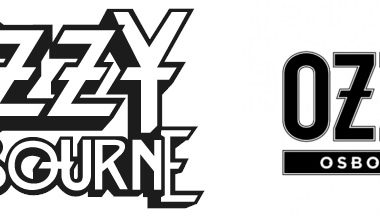Spiderman is a superhero created by Marvel Comics, arguably the most renowned and successful in terms of sales. Many fans have started to relate to their Spiderman stories as the character entered canonical superhero narratives. Even those unfamiliar with the genre could recognize the character’s symbols and attire because they were so well-known. The distinctive Spider-Man logo plays a crucial role. Stanley Martin Lieber, a playwright and editor for the renowned American publishing house Marvel Comics created the character’s original design. Artist Stephen J. (Steve) Ditko, who also designed the Spiderman logo and costume, brought his concept to life. Let’s look at the intriguing Spiderman logo’s backstory. Meanwhile, you can check out Creative Fabrica to obtain incredible logos!
In What Way Did Spiderman Come Into Being?
Stan Lee, Steve Ditko, and Jack Kirby collaborated to create the Spider-Man comic books we are familiar with and enjoy reading today. All of the traditional comic book superheroes up until this point were grown men with demonic features. Stan Lee wanted a story that adults and teens could relate to, which was more about people.
At first, the studio was against this idea because they thought a character similar to humans would not fit their vision of a demigod. The studio also didn’t see the teenage superheroes as main characters but as supporting characters.
When Stan Lee introduced Spiderman in the 15th issue of the “Amazing Fantasy” comic book series in 1962, the public loved him. Peter Parker’s split personality and existence made him a more dynamic and fascinating character. The second character had superpowers that he was allowed to use, but the first was a humble college student who lived with his uncle and aunt because he was an orphan.
Like most teenagers, he used the power to make money at first, but his life took a different path when his uncle died. Peter Parker, at last, understood the value of using his superpowers to fight crime.
The History Spiderman logo
There are rumors that Jack Kirby designed the classic Spider-Man logo long before the scripts for the show were written. Even so, the prototype was lost, and the similarities between Kirby’s logo and Steve Ditko’s were never found. Due to changes in style and time, the logo has changed significantly over the years. Every new series has a revised logo, maybe to reflect Spiderman’s developing persona.
Spiderman debuted in Amazing Fantasy in August 1962 (a comic book anthology). Since then, the character has been in several Marvel Comics books and other media. Because Spiderman and his story were so popular, they became movies, TV shows, and video games. It would be safe to say that Spiderman and his innovative symbol are a big part of why Marvel Studios has been so successful.
The superhero Spiderman logo is completely distinct from the media-house Spiderman logo. The first is shown in comic books, cartoons, movies, video games, TV shows, and plays, while the second is a fictional character whose clothes look like a spider.
The First Spiderman Logo 1962
In cartoons and comic books, the first Spiderman logo was a round, eight-legged spider that Parker made in the story. It looked very bulky and crowded. He did a great job, especially considering there weren’t many essential resources for logo design back then. Children and teens who could connect the symbol to the character thought it cool.
Although Steve Ditko designed the logo, Peter claims sole ownership of its creation. Jack Kirby and Steve were tasked with making Spiderman’s suit, but only Steve could make Stan Lee’s idea come to life. People liked Steve Ditko’s design right away, but Jack Kirby’s was turned down because it was too muscular and looked like Captain America.
Even though the Spiderman logo and clothes have changed many times, the first Spiderman outfit is still the most recognizable. The character stood out against New York’s grey concrete walls because of the red and blue color scheme, which looked fantastic on paper. The early Spidey contestants also wore colorful outfits for the same reason.
Version 1966 of John Romita Sr.
John Romita Sr. took over as Steve Ditko’s replacement in 1966 following the release of The Amazing Spiderman. He characterized the Silver Age and paved the way for the Bronze Age of comic books as an equally inventive artist as Ditko. His inventions were a major factor in the series’ remarkable success.
Romita gave the series some of its most significant characters, like Hobgoblin, The Kingpin, MJ, etc., during his time as Marvel’s art director. He changed the symbol as soon as he began working for Spiderman, which improved his standing and role at Marvel Studios. On the other hand, the Spiderman emblem from 1966 was much narrower and out of place on the front of Spiderman’s suit.
The original Spiderman logo was written in a soft-shape sans-serif font. The wordmark was somewhat curved and had yellow letters with crimson undersides.
1979 – 1985
In 1979, the typography for Spider-Man had wider, more linear shapes. Wide red-orange lines surrounded the white characters that were written on the page. The title of the comic was more symmetrical and included an arch. However, the lackluster light gradient gave it a cartoonish appearance.
The Spider-Man logo underwent another significant update in 1985. For the following five years, a new variant with slanted SPIDER-MAN lettering was to be used. Because of how the gaps and sizes were chosen, the letters looked like they were falling in three dimensions. The wordmark simultaneously appeared substantial, hefty, and impressive from above. For the lettering, orange lettering with broad yellow borders was used. The most interesting thing about this logo is the hanging spider in the foreground, right above the letter “M.”
1994 – 2005
“Spider-Man: The Animated Series” was the intended audience for this updated wordmark. The font was improved, flattened, and given a magical, spider-like appearance. Further expanded, ragged, and smeared in red were the letters.
2005 – the Present
The current Spider-Man logo, created in 2005, looks more polished and modern than any earlier iterations. Unlike before, the designers gave the letters’ clarity and symmetry the attention they deserved.
An image of the Spiderman logo on a black outfit was among the most well-known variations. In this case, the way the character is portrayed and the color of the costume show all of the bad things about the antagonist. In the comic books, Peter had to contend with his irritable persona. Regardless of what it means, the emblem is pretty striking.
It got people’s attention with its unique one-color design and long, clearly defined spider legs, which led them to buy it. The Spiderman logo had another change in 2013. Alex Ross’s script for the show’s first episode gave Humberto Ramos the idea for the spider logo, which had a unique shape and was bigger than most other logos. It had a chic and alluring appearance.
Another intriguing creation is a recent logo that combines the Spiderman and Ironman logos. Here, red and gold are the main colors, while the hero’s chest is covered in a black spider.
Different Logos
We can’t help but bring up Rick Leonardi’s 1992 design. The outfit included a spider with a skull-like body. The first Hispanic Spider-Man wore the attire.
The Ultimate II edition in 2011 had a red bug on a black background. Sara Pichelli created the picture.
There is no wordmark in the Spiderman logo. From one season to the next, there may be variations in how the superhero’s name is displayed.
History of the Company
Everyone adores Spider-Man. This enduring character from Marvel Comics has been a normal Joe at heart for over sixty years, although one who just so happens to have amazing superpowers.
Unfortunately, none of the superpowers are strong enough to solve many of the bigger problems in real life, and Peter Parker’s life as Spider-covert Man is a great example of how strange it has become for him.
1962’s Spider-Origins Man’s
The main character in the Spider-Man story is Peter Parker, a teenage orphan who lives with his uncle Ben and aunt May in New York. Parker was a quiet young man who excelled at science. Other, more popular kids, like his longtime enemy Flash Thompson, would often make fun of him. But his life was about to change irrevocably after going to the science museum.
A radioactive spider bit Parker in the museum. Parker now has the reflexes and strength of a spider, thanks to the bite. Additionally, Parker developed a “spider-sense” that constantly warned him of danger.
Parker decided to fight crime after trying to use his new abilities to get famous and rich. He rose to fame after working with a wrestling group, and he made his TV debut. Parker declined to intervene in a heist while the TV show was on.
Parker later learned that the burglar who attempted to loot his uncle and aunt’s home and was killed during the struggle was the same one he could have dealt with at the TV studio. After hearing what his dying uncle said, Parker decided to fight crime instead of trying to get rich and famous. At this point, Spider-Man started to take on his current form.
One of Parker’s major life turning points was his connection with Gwen Stacy. As a child, Parker had a genuine affection for Gwen. He suited the blonde beauty just perfectly.
Read Also: Shell Logo: What Does the Logo Represent?
Tragically, this love ended when Gwen perished in Parker’s fight with the Green Goblin (Norman Osborn). Parker exerted every effort to save Gwen. He has always been troubled by what happened, and it’s hard for him to tell people who he is because he’s afraid his enemies will use them as targets.
After Parker overcame his sadness about losing Gwen, he started dating Mary Jane Watson, a model, and actress who went to high school with him. Parker worried that he would hurt his new lover, making it hard for them to get along. When Mary Jane eventually told Parker that she had known he was Spider-Man for some time, it improved their relationship.
In the “Secret Wars” miniseries, the all-powerful being known as “The Beyonder” sends many of Earth’s heroes to a different planet. In the new world, Parker obtains a new black suit with a limitless supply of webbing and the ability to modify its shape with thought while in the new world. After getting the costume back to Earth, Parker puts on his new gear and goes after criminals. The garment quickly reveals itself as a parasite from another planet that tries hard to get along with Parker.
The Fantastic Four help Parker get out of the black suit and back into his usual red and blue clothes. But the foreign symbiont
After he gets close to Eddie Brock, a rival journalist who is also a journalist, Venom turns into a bad guy. Since then, Eddie and Venom have had acrimonious disagreements, and they fight frequently.
Read Also: MARVEL LOGO: History & What You Should Know!!!
Parker discovered that his powers were similar to those of Native American totems. Peter died during a bloody battle with a monster by the name of Morlun, only to rise again with stronger spider-like skills. During his fight with Morlun, Parker’s Aunt May finds out that he is Spider-Man, and she is now one of his biggest fans.
Iron Man, Tony Stark, has recently taken Parker under his wing. He now gets new gear thanks to Stark, which increases his strength and power and protects him from gunfire. He was the best face of the movement because he told everyone his secret identity. Stark then announced the Superhuman Registration Act as part of his plan to get superheroes under control. The future repercussions of this action for Spider-Man could be disastrous.
It took Parker some time to realize that he wasn’t on the right side of the conflict, so he defected and joined Captain America’s band of outlaw heroes. After the battle and Iron Man won, Parker fled and hid. When he did, he went back to wearing all black. The police are currently looking for him.
Skills, Powers, and Gear of Spider-Man
A radioactive spider’s bite resulted in mutations that gave Spider-Man superhuman abilities. The ability to attach to walls has always been a part of Spider-Man since the first stories by Lee and Ditko. People think this power comes from the Van der Waals force, an interaction between Spider-Man’s body and surfaces that depends on how far apart they are.
However, Spider-hands Man’s feet in the 2002 film adaptation were covered in microscopic cilia that resembled those on a real spider’s foot. Spider-Man also has superhuman strength, agility, speed, balance, and a sense called “spider-sense” that lets him know when danger is coming.
Spider-Man can recuperate from any wounds sustained in conflict. In the 1989 story “Acts of Vengeance,” it was said that Spider-Man had “superhuman healing skills” that helped him get over how tired he was after beating the Tri-Sentinel.
Even though Steve Ditko and Stan Lee first thought of Spider-Man as being smart, later writers made him out to be a genius. After years of fighting, he turned his skills into martial arts, which is different from his powers. Parker has a great academic record and is skilled in engineering, applied science, physics, chemistry, and biology, among other things.
Using his skills, he makes his disguise to hide who he is and several tools to help him do his job better, such as mechanical web shooters that help him find and catch his enemies. He also came up with a criminal warning beacon and a flashlight in the shape of a spider signal. Even though Thomas Fireheart is home to some of the world’s top scientists, they cannot duplicate the fluid that Parker created when he was still a high school student.
The Future of Spider-Man
The future Spider-Man is likely to be Miles Morales. He was casting a young Tom Holland as Spider-Man was a wise choice because it would allow the actor to play the character for several years to come and would enable him to grow into it.
Tom Holland is most likely to continue playing Spider-Man for a while, despite growing rumors that several movies might feature a young Spider-Man in high school. And since “Spider-Man: Homecoming” has been getting good reviews, there’s no reason to change anything.
Fans shouldn’t be surprised if Miles Morales shows up in Spider-Man at some point shortly since Sony seems to want to make its movie universe.
Evolution of the SpiderMan Logo
The logo underwent several distinct drawings in its early years. The insect’s legs alternated between being bent and straight. Real spiders’ legs grow between the head and the abdomen, but they usually stick out from the middle of the body.
The Spiderman logo was more uniform once artist John Romita joined the project in 1966. The legs were positioned parallel to one another, the body was narrowed, and blue was used instead of black. Early in the 1970s, the symbol underwent another change: the body became more slender, and the limbs were depicted as a fan.
A Spider-Man movie fan named Randy Schuller proposed a new design for the logo in the early 1980s. The Marvel Company, which published comic books, purchased the concept, and the designers gave it life. The superhero had a white spider on his chest and was dressed in a black outfit. It swelled to enormous proportions, consuming most of Peter’s attire, and its legs encircled him.
This one is one of the most unique and enduring images in the brand’s history. It didn’t last long, though. They changed his mascot’s appearance four years later and brought back his black and red color scheme. And in 1994, the creators unveiled the cherry-red spider with unusually long legs for the first time. The bug then grew even larger, with wider-amplitude legs.
Beginning in the early 2000s, designers began experimenting with the logo, changing the insect’s body shape and leg length depending on the movie. Many were inspired by the character’s early years when the spider was drawn most realistically.
In the past 20 years, the insect has occasionally developed jaws like a predatory animal.
Ultimately, the creators gave the hero’s mascot its original appearance.
Who Designed the Spiderman Logo?
Stan Lee, Steve Ditko, and Jack Kirby collaborated to create the Spider-Man comic books we are familiar with and enjoy reading today. All of the traditional comic book superheroes up until this point were grown men with demonic features. Stan Lee wanted a story that adults and teens could relate to, which was more about people.
At first, the studio was against this idea because they thought a character similar to humans would not fit their idea of a demigod. The studio also saw the teenage superheroes as supporting cast members rather than prominent characters.
When Stan Lee introduced Spiderman in the 15th issue of the “Amazing Fantasy” comic book series in 1962, the public loved him. Peter Parker’s split personality and existence made him a more dynamic and fascinating character. The second character had superpowers that he was allowed to use right, but the first was a humble college student who lived with his uncle and aunt because he was an orphan.
Like most teenagers, he used the power to make money at first, but his life took a different path when his uncle died. Peter Parker finally understood the value of using his superpowers to fight crime.
The original Spiderman symbol 1962
In cartoons and comic books, the first Spiderman symbol was a round, eight-legged spider that Parker made in the story. It looked very bulky and crowded. He did a great job, especially considering there weren’t many basic resources for logo design back then. Children and teens who could connect the symbol to the character thought it cool.
Although Steve Ditko designed the logo, Peter claims sole ownership of its creation. Jack Kirby and Steve were tasked with making Spiderman’s suit, but only Steve could make Stan Lee’s idea come to life. Steve Ditko’s design was immediately embraced, whereas Jack Kirby’s was rejected because it was too muscular and reminded people of Captain America.
Even though the Spiderman logo and clothes have changed many times, the first Spiderman outfit is still the most recognizable. The character stood out against New York’s grey concrete walls because of the red and blue color scheme, which looked fantastic on paper. The early Spidey contestants also wore colorful outfits for the same reason.
Important Aspects of the Spider-Man logo’s Design
Every time the superhero rips off his outfit to save the universe, the Spider-Man logo is visible, covering the characteristics on his chest. The enduring emblem conveys Spider-feeling Man’s duty and dignity and is a powerful visual representation.
The Spiderman Logo’s Shape
The logo, which shows a spider in front of a strong web, symbolizes the character’s incredible speed, abilities, and supernatural powers. The spider is a common representation of strength, skill, knowledge, mystery, creativity, and protection.
The Spiderman Logo’s Colour is
In the comic books, the Spiderman logo had a mysterious black hue, whereas the first two Spider-Man and Spider-Man 2 movie pictures had a brownish-black tint. The typical red backdrop symbolizes the superhero’s vigilante character. The silverfish grey color of the spider also draws attention to the hero’s heroic spirit.
This color palette did have a few outliers, though. For instance, the 1994 edition had a blue background, while the 1984 version featured a white spider on a black background. Both versions included unique attire.
The spider and its web are often black with a red background. The variations that occurred in 1984 (white spider, black backdrop) and 1994 (blue background), as well as special outfits, are a few examples of deviations from this rule.
The Spiderman Symbiote Logo
From the 1970s on, Spiderman’s symbol didn’t change much until 1984, when a new superhero storyline started. The Symbiote and Spiderman’s sinister alter ego were key to this plot. The transition was noticeable and striking. The first adjustment was to make Spiderman’s outfit entirely black.
To contrast with the black suit, the emblem was then left white. To make the spider appear larger overall, its chest was also enlarged. Randy Schueller, a fan, actually created the concept for this logo. Before putting their artists to work, Marvel decided to buy the concept since they liked it so much.
Conclusion
Throughout the epic series, the Spiderman logo has seen several changes. Others were done to fit the movie’s concept, while some were made due to a change in proprietary rights. In a way, how the logo has changed over time is a tribute to all Marvel designers’ work to keep people interested in and entertained by their works. They’ve been working nonstop to change their designs to fit new stories and characters who change over time.
Related Articles
- APPLE LOGO: Why Did Steve Jobs Use An Apple? What You Should Know!
- MARVEL LOGO: History & What You Should Know!!!
- BUICK LOGO: Meaning, Old Logo, & History
- EXPEDIA LOGO: Everything You Should Know!!!
- Black Panther Logo: What Does it Represent? Detailed History






